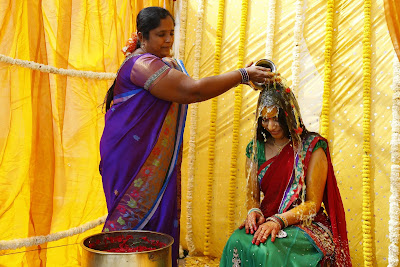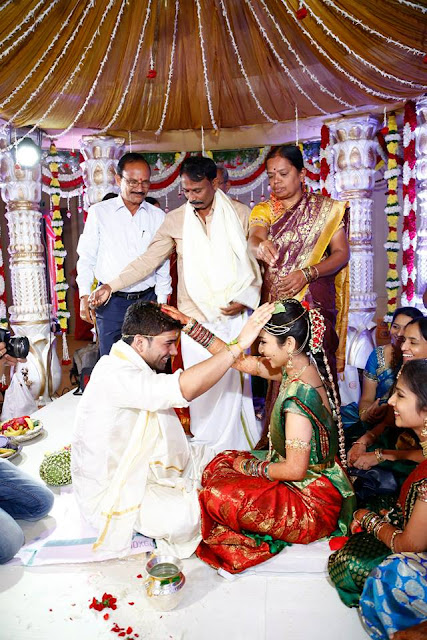kanyadanam is the ceremony in which the girl's family hands over their daughter's responsibilty to the groom. During this ceremony the bride and groom are not allowed to look at eachother and therefore, they are separated by a curtain that is placed between them. the groom is said to chant "Dharmecha Arthecha Kamecha Mokshecha Naticharami" three times and gives brides father assurance that the bridegroom shall remain for ever her companion in joy and sorrow.
Jilakara Bellam: The couple is asked to place a paste made from cumin seeds abd jaggery on each other's head. this ceremony is observed to communicate that the relationship of the married couple is unbreakable and inseparable.
Mangalasutra Dharana: It means tying mangalasutram. the groom ties the two strings of the mangalasutram each with a golden disc, around the brides neck. managalsutram represents the physical , mental and spiritual union of the couple. In the Telugu wedding, the groom ties three knots of mangalasutram.
Saptapadi: As a part of the saptapadi rule, the groom and bride walk seven steps together around the fire, while taking their oaths of caring,loving,protecting,understanding and guiding eachother.
Sthalipakam: It is a ritual where in the groom adorns the feet of the bride with silver toe rings. and also he put on black beads on the neck of bride. The black beads along with silver toe rings symbolize that she is a married woman.
and then after completion of the marriage the next day the groom family arranges a reception and people comes to wish a new couple and give blessings to the bride and groom along with the delicious dinner the reception goes on.















